
The Art of Non-Alcoholic Spirits
blog
For decades, spirits and cocktails have fostered a culture of craft, connection, and celebration. But over time, cocktail culture has evolved far beyond the buzz!
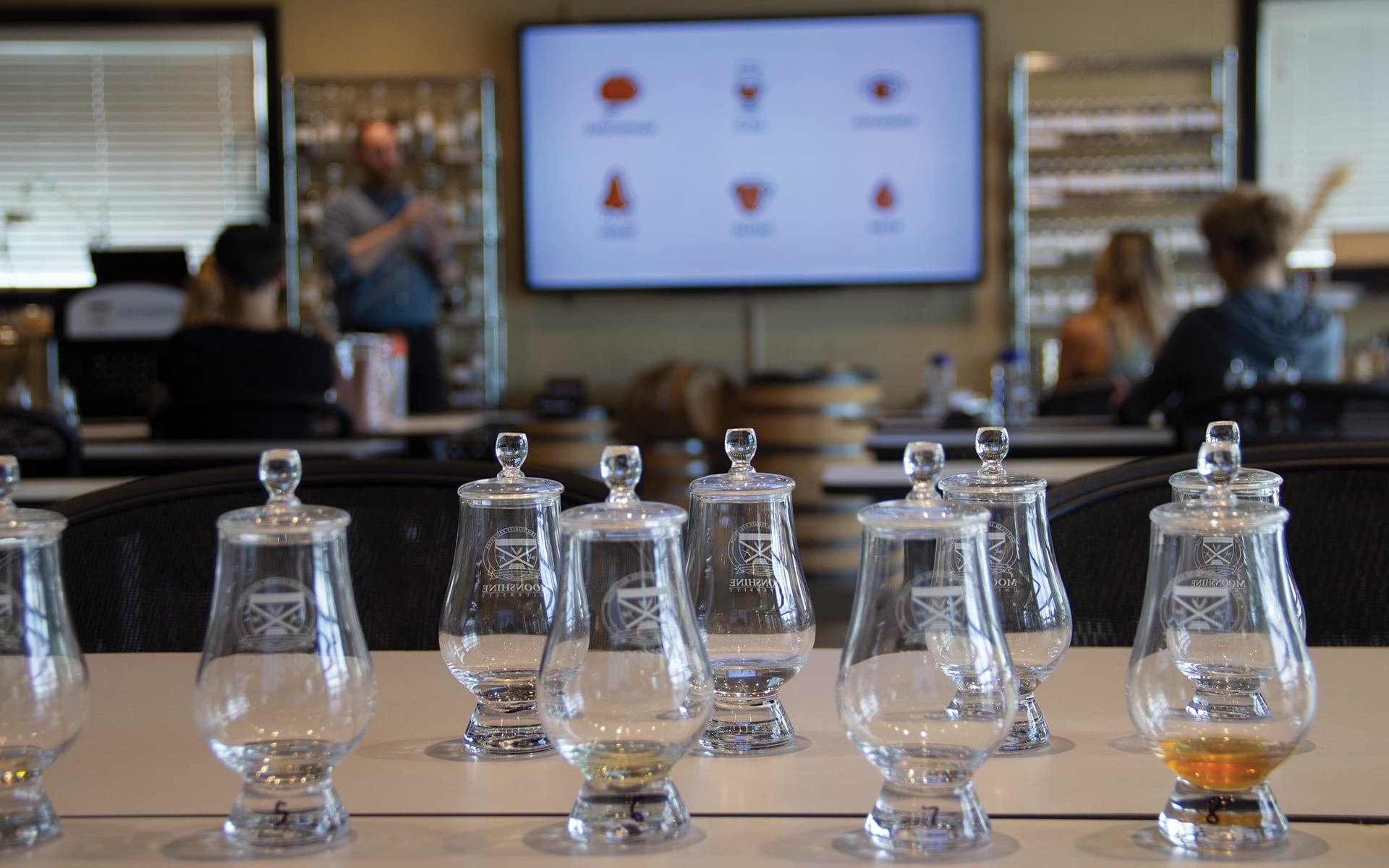
Written by Jonathan C. Jackson, Executive Bourbon Steward.
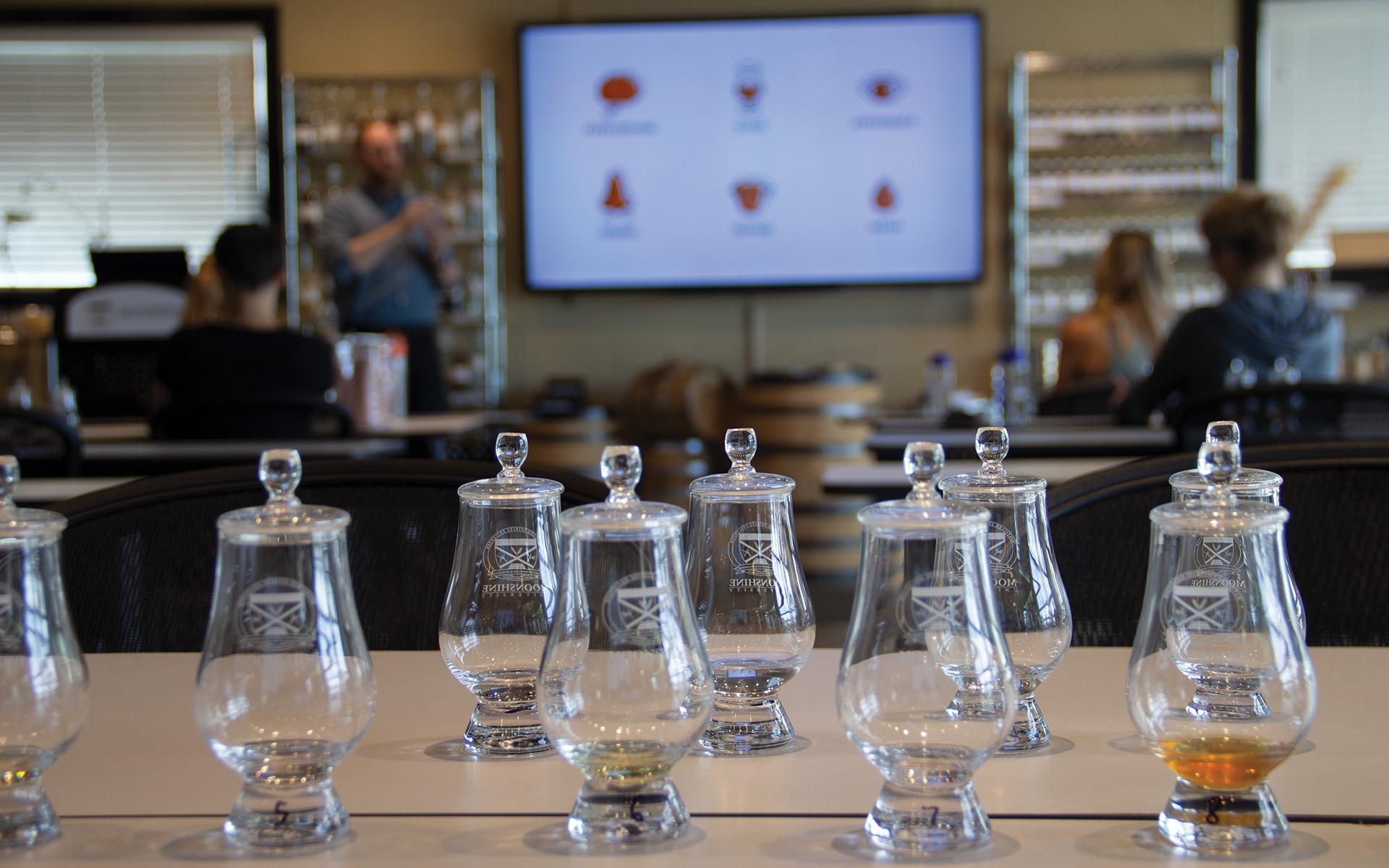
To truly appreciate the spirit in your glass, you must sip it. Back when I was just a little boy my granddaddy would talk about taking a "snort" from a bottle. He would grin and then shake his head and say, "Shew-wee." It would make me laugh, having no idea what he was talking about.
I later heard in a Jimmy Buffet song, "God's Own Drunk," about "taking a slash" of "honey dew vine water." It struck me that the slash was something painful but necessary, leading to communion with a Kodiak looking bear.
Finally, there is the ever popular "swig" that gives you reason to envision stereotypical hillbillies sporting an empty jug across their shoulder. Snort, slash, swig… Whatever you choose to call this first (and second, and third) taste from a bottle, your approach to the experience lends something important to the true enjoyment of a crafted spirit.
That's why I am past the days of calling myself "A Drinker." I spent too much time back in college and in my younger years consuming my drinks without truly tasting them. Instead, I traded out that title for the sophisticated experience of being "A Sipper" — but it didn't happen overnight.
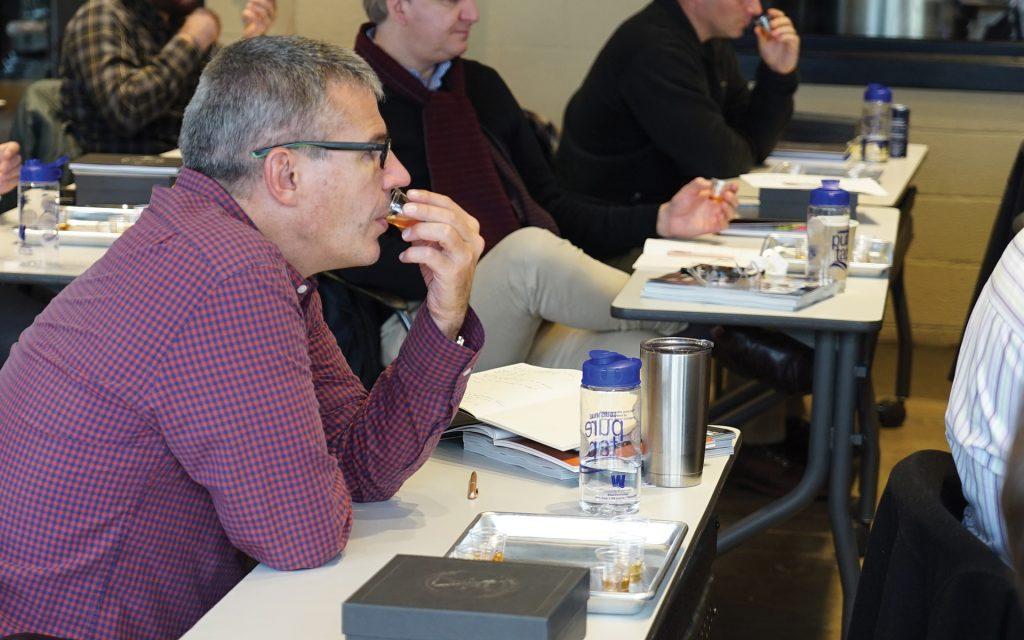
A couple of years ago, I made the decision that without any particular expertise, I wanted to own and operate a craft distillery in Tennessee. It seemed so simple after watching a slew of others fulfill the same dream successfully on cable television; however, I quickly learned that there is a true and genuine art form to crafting whiskey complemented by an exhausting amount of scientific processes. I had to do some homework.
In the last two years, preparing to embark on this effort, I have had the pleasure of visiting 24 distilleries throughout four states. By talking with the owners, distillers and skilled workers within, I learned that each distillery employs the same foundational principles of the craft and science of distilling and distillery operations; but it was in the tasting rooms of these distilleries that I learned the most important lesson in my journey.
There, I discovered how to experience the nuances of a spirit and how to appreciate the love and labor behind a distiller's craft. Naturally, this led me to complete the Executive Bourbon Steward Certification at Moonshine University. Paired with my personal ventures, the program enriched my understanding of the history and styles of bourbon and whiskey, while exposing me to the complexities of the production process, distiller terminology, and sensory training needed to get the most out of every sipping experience.
Gone were the black and white ideas of "tossing back a shot" with the other cowboys. Ahead were the days of choosing to use a Glencairn glass at every opportunity; of learning that neat is the method of choice for tasting a well-crafted spirit; of enjoying a flight of five expressions rather than a tumbler of one; and of swirling, taking the time to look at the legs of a spirit and nose from left to right, then back again.
I had learned that every sip could be savored then swallowed, and in this thoughtfulness, I discovered the power of making a glass of whiskey an experience — a distinctive event all its own.
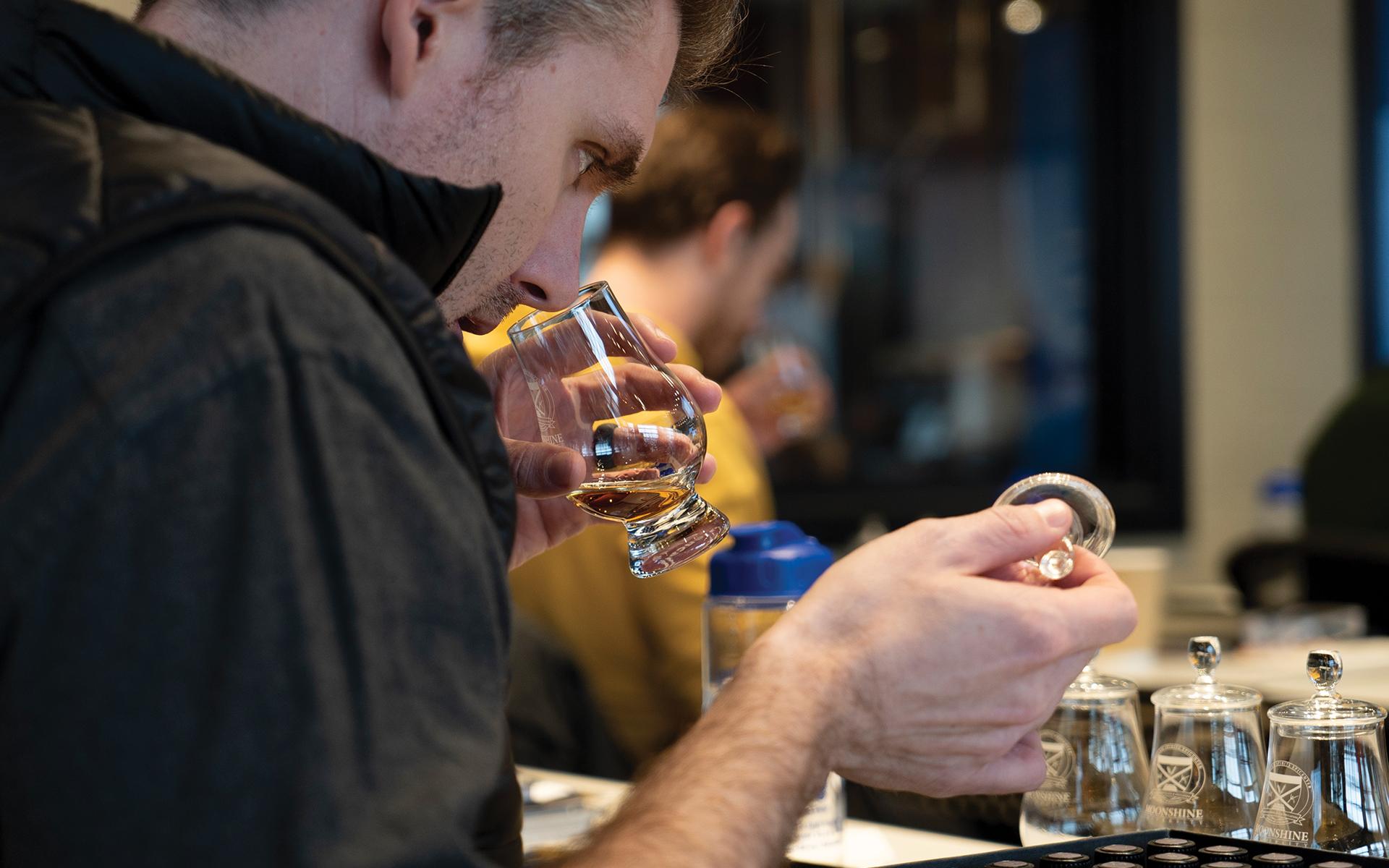
Now I sip with purpose. But before getting to this point, I basically had to erase everything I thought I ever knew about distilling and more so, how to slow down and enjoy a spirit.
By taking a shot you flood your mouth all at once with a harsh substance and it shocks the senses — which explains the "Shew-wee" my grandfather would exclaim with every "snort" he took. When you sip slowly and with purpose, you allow yourself the opportunity to experience the complexity of a spirit — its variety of tastes and sensations, how the spirit affects different parts of your tongue and throat, the warmth as you swallow, the lingering aftertaste.
It was thanks to a large number of distillery hosts and craft professionals — like Pops and Matt at Leiper's Fork Distillery in Tennessee — that I learned how to appreciate what was in that small tulip-shaped glass. On one occasion, I learned the process of "chewing" my whiskey. During another, I learned how to "nose" the glass as if introducing myself to a new friend.
It's possible to enjoy the individual notes of a bourbon's character, the hints of caramel, oak, or vanilla, and the spicy pepper of a rye, to gauge the difference between spending 6 years in a barrel versus 23, or drinking an 80-proof versus 110. With enough pause, you give the love and labor that went into carefully crafting that juice the chance to shine through. And with time, you'll be well on your way to carry on intelligent and informed conversations about an expression by just being armed with what you can learn from those first few sips.
If you want to truly appreciate that expensive bottle of whiskey on the shelf, the spice of the rum, or the botanicals in your gin, then you must learn to sip your spirits. Educate your palate and your nose, and you'll find yourself open to a level of sophistication and enjoyment of spirits that most of the world chooses to speed past. Do this, and the next time someone asks you if you drink, you'll be able to shake your head, smile and say, "I sip."
Written by Jonathan C. Jackson, Executive Bourbon Steward.

blog
For decades, spirits and cocktails have fostered a culture of craft, connection, and celebration. But over time, cocktail culture has evolved far beyond the buzz!
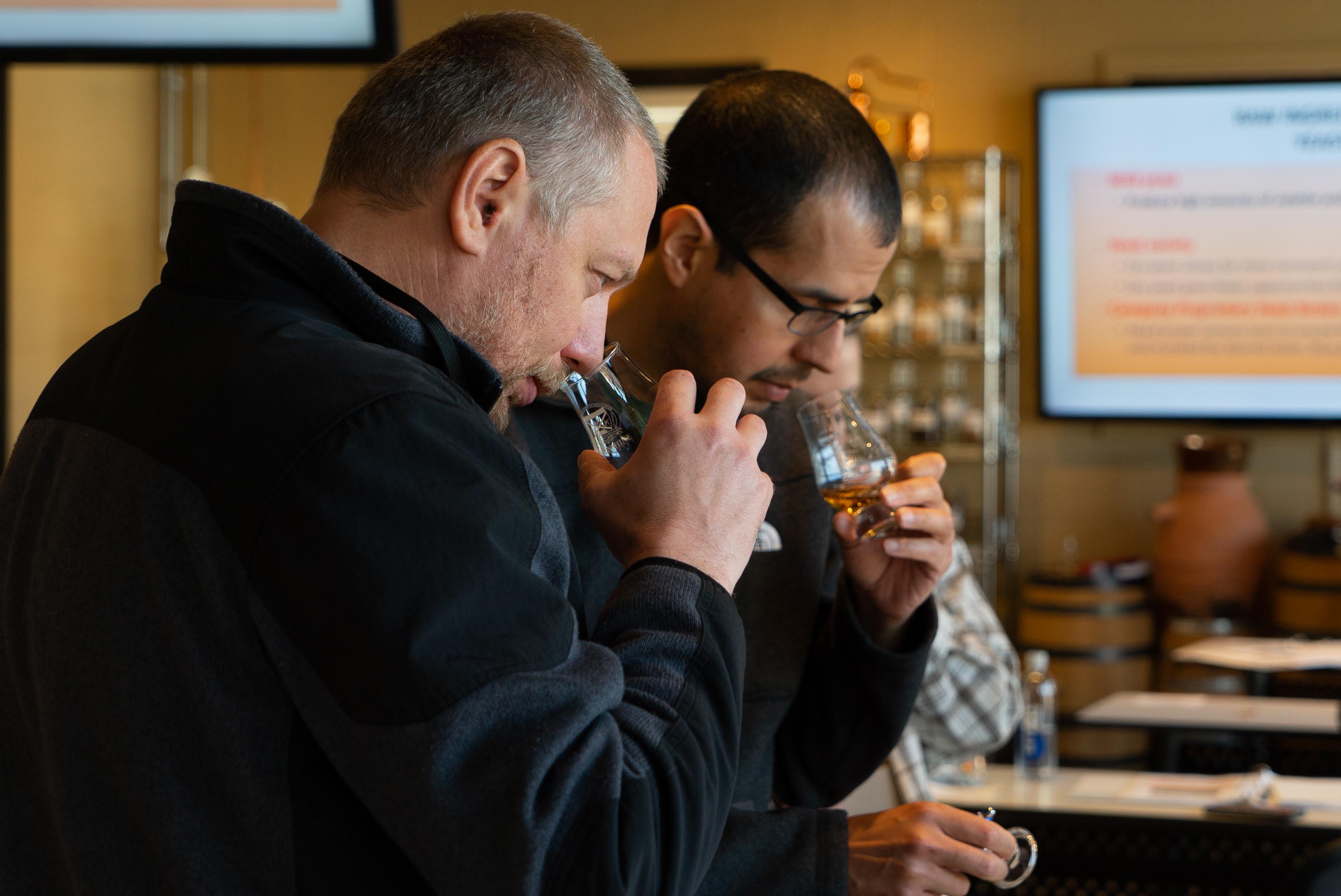
blog
Those that are familiar with the process of crafting distilled spirits may also be familiar with the 10 common congeners that are created during fermentation, and honed during the distillation run. Each congener has its own distinct personality, rendering unique tastes and aromas to the finished spirit.

blog
So, you want to start distilling with freshly milled grain. Maybe you're tired of paying top dollar for the pre-milled stuff from the malt distributor, and you're ready to invest in the quality, efficiency, and bulk pricing that comes with milling your own whole grain. But where do you start?